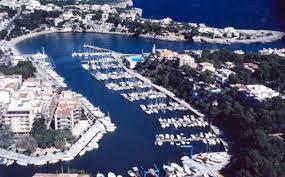Ports located on the east coast of the island of Malloca that has its antecedents in the time of the Roman Empire. The ports’ infrastructure is managed directly by the Balearic Islands government and the other is managed by the Yacht Club of Porto Cristo. They are formed by the springs along the river on both sides of the bay, as well as a refuge dam and a retaining barrier. In 1934 another boat loaded with amphorae, rainbows and a lead iron was discovered about 50 meters from the beach. The earliest records of fishing in Cove date back to 1247 and the sale of fish in the Plaza de Manacor, probably from Cala Manacor, of 1282.Es evident from the nearshore intended for defense and security structures, but also from the oral tradition that pirate attacks were to be constant until by the nineteenth century they were over. This fact and the arrival of a number of fishing families from other Mallorcan towns, such as Felanitx, Capdepera and Valldemossa, made trade and fishing experience a new impetus, in spite of inadequate port facilities. Small boats were stranded on the sand of the beach, while boats and merchants were anchored in front of the Cueva des Correu and, using a floating platform, termed the loading and unloading of goods. For this reason very soon the construction of a dock and dry dock was required. In 1932, the dredge Amadeus II arrived in Porto Cristo and operated until 1936, when construction began on a 100-meter-long dock from the dry dock to the fish market. Fishing forced a series of improvements, such as the creation of fishermen Granary Porto Cristo and Cala Bona that years later would lead to the Fishermen’s Association or the opening of a Jaume Vaquer-owned ‘Vermell’ shipyard in 1943. A few years later, the port reached category of refuge for fishermen and so between 1951 and 1952 Martello, a dam about 100 meters long that extends the Punta dels Pelats and laid a retaining wall against the coming waves was built from the outside. In 1968 the Rivetto pier was built and the mollet was prepared with the construction of some offices and warehouses for fishermen. In the 1970s it was equipped with electric lighting and the Nautical Club was built. Since then, work to improve the harbor has been constant, with the construction of new harbor buildings with fishermen’s warehouses, fish cameras, restaurant, offices, anchor trains, etc., allowing the harbor user and visitor the best welcome and service.









